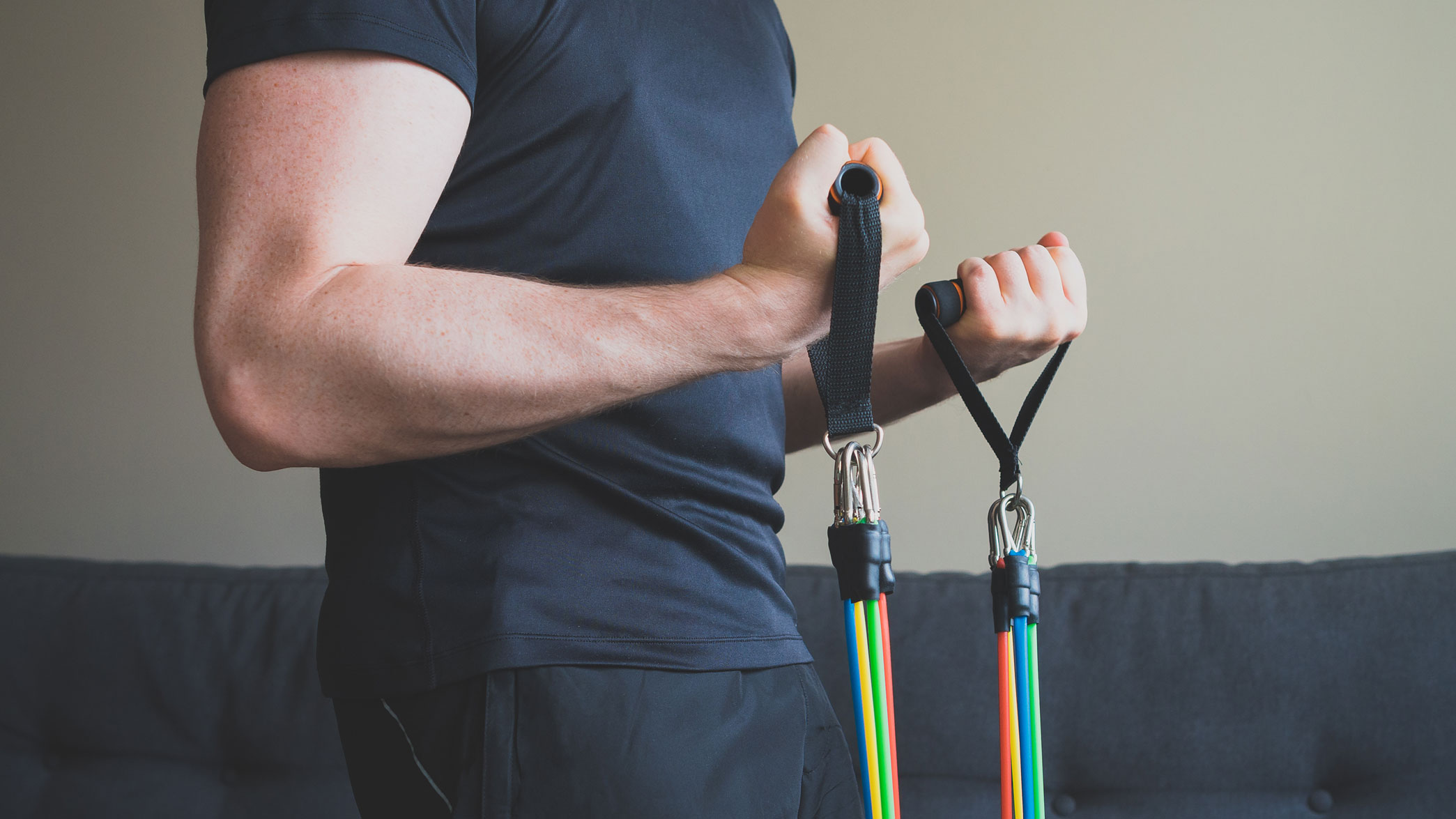Every fitness beginner needs a resistance bands set for big gains at a tiny cost

The best cheap piece of fitness gear I've ever bought from Amazon, for myself or someone else, wasn't one of the best fitness trackers. It wasn't a yoga mat, or a set of weights, or even a massive discount on one of the best treadmills or other cardio machines. It cost less than $30 (around £25 in the UK or AU$45 in Australia), it's easy to use, weighs practically nothing, and essentially acted like a home gym for beginners.
If you're just starting out on your fitness journey and you're interested in building even a small amount of muscle, the best advice I can give you is to buy a full set of resistance bands or tubes. Not every cheap piece of fitness kit is worth buying (just check out what happened when I tested the cheapest fitness tracker against a Garmin watch, for example) but bands are worth twice what they cost and I couldn't recommend them enough. If you were to limit me to only one kind of fitness kit for the rest of my life – apart from my best running shoes, and maybe a pull-up bar – I would probably choose resistance bands.
Resistance bands come in several different shapes and sizes. Some are simple short loops, and they work fine, but the sets I like to use are tubes of different strengths ending in hooks. These hooks can clip onto handles, ankle straps or an anchor that can be fixed behind a shut door.
What you end up with is a kit that costs less than a round of drinks, but can replicate the effects of almost any weighted or cabled gym machines. Resistance bands can be rolled up and fit into any gym bag or backpack, making them ideal for on-the-go. You can work out in a hotel, at the gym, in the park, or at home. If you use a pull-up bar, you can use resistance bands to help take some of your weight while you work up to unassisted pull-ups.
And if you're a fitness beginner, at home is where the bands really shine. The insane portability of bands means you can get a full-strength workout with no big, unwieldy machines or weights taking up a huge chunk of your floor space. They're also a far less intimidating and perhaps safer way to begin building muscle.
Regardless of your fitness level, building and maintaining some muscle is very important, especially if you're looking to stay healthy into your senior years. As you age, your muscles begin to waste, shrink and shorten, undergoing a process known as muscular atrophy. Fortunately, resistance training can help slow and even reverse this process.
Research from Canada's McMaster University says "resistance exercise training combined with appropriately timed protein ingestion… may represent a highly effective treatment strategy to counteract the muscle wasting associated with aging and chronic disease". A strong body means climbing stairs, maintaining grip strength, and better circulation well into your twilight years.
Sign up for breaking news, reviews, opinion, top tech deals, and more.
Some seniors might not want to lift heavy objects, especially if they've been sedentary for a long time. Elastic resistance bands are often presented as a cheaper, safer alternative to heavy metal or plastic weights. And for more experienced lifters looking for a workout solution at home, you can simply double up on bands to really make it harder to push or pull them with increased resistance. This means one set of bands will last you years of training.
Even though January's nearly over, it's not too late to make a change for 2023. For $30 / £25/ AU$45, you're never going to get a better bang for your buck than this.

Matt is TechRadar's expert on all things fitness, wellness and wearable tech.
A former staffer at Men's Health, he holds a Master's Degree in journalism from Cardiff and has written for brands like Runner's World, Women's Health, Men's Fitness, LiveScience and Fit&Well on everything fitness tech, exercise, nutrition and mental wellbeing.
Matt's a keen runner, ex-kickboxer, not averse to the odd yoga flow, and insists everyone should stretch every morning. When he’s not training or writing about health and fitness, he can be found reading doorstop-thick fantasy books with lots of fictional maps in them.